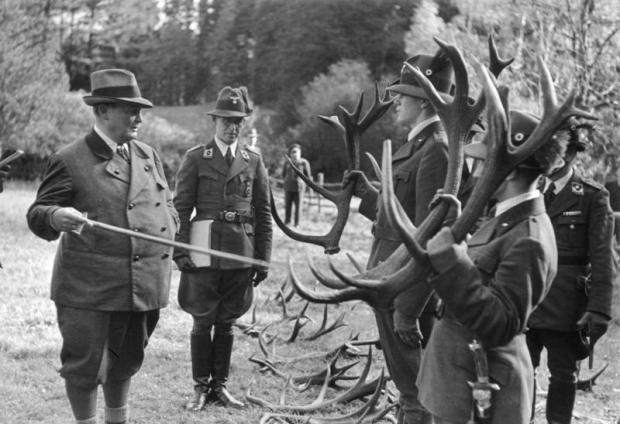
It’s at times of great inhumanity that you can find the greatest examples of humanity, if you look closely enough.
Jan Żabiński (8 April 1897 – 26 July 1974, Warsaw) and Antonina Żabińska (1908–1971) were a married couple from Warsaw,recognized by the State of Israel as the Polish Righteous Among the Nations for their heroic rescue of Jews during the Holocaust in occupied Poland. Jan Żabiński was a zoologist and zootechnician by profession, a scientist, and organizer and director of the renowned Warsaw Zoo before and during World War II.

He became director of the Zoo before the outbreak of war but during the occupation of Poland also held a prestigious function of the Superintendent of the city’s public parks in 1939–1945
The zoo’s large collection of exotic animals and successful breeding program attracted visitors from all over the country. Especially when, in 1937, the zoo introduced the first Polish-born elephant – Tuzinka

Jan and Antonina were great lovers of art as well as animals: Jan had studied drawing at the School of Fine Arts and worked as a researcher at the Warsaw University of Life Sciences, at the Department of Zoology and Animal Physiology. Antonina was an archivist at the same department, which is where they met.
The zoo’s owners kept in close touch with the local creative community. They opened the zoo up to many artist and musicians, who would come there to work, get inspired, or give concerts in the open air.

The colorful guests and the social activism of the Jan and Antonina, soon earned their residential villa the nickname “the house under a wacky star
The zoo was thriving right up until the Second World War, when the German army invaded Poland in 1939. The bombing of Warsaw on September 1 also hit the zoo, killing many animals and urging Jan Żabiński to kill off all the predatory animals that might escape and roam the streets in subsequent bombings.

The remaining animals faced a sorry fate: the German army organized a spontaneous hunt at the zoo, shooting any animal they deemed “not valuable.” Those animals that were considered “valuable” were captured and transported to the Schorfheide reserve, close to Berlin, at the border with Poland.

Tuzinka the elephant was taken to the zoo in Köningsberg.
The Germans appointed him superintendent of the city’s public parks as well. Availing himself of the opportunity to visit the Warsaw ghetto, ostensibly to inspect the state of the flora within the ghetto walls,

Żabiński maintained contact with prewar Jewish colleagues and friends and helped them escape and find shelter on the “Aryan” side of the city.Żabiński maintained contact with prewar Jewish colleagues and friends and helped them escape and find shelter on the “Aryan” side of the city.
Many cages in the zoo had been emptied of animals during the September 1939 air assault on Warsaw, and Żabiński decided to utilize them as hiding places for fleeing Jews. Over the course of three years, hundreds of Jews found temporary shelter in these abandoned animal cells, located on the eastern bank of the Vistula River, until they were able to relocate to permanent places of refuge elsewhere. In addition, close to a dozen Jews were sheltered in Żabiński’s two-story private home on the zoo’s grounds.

In this dangerous undertaking he was helped by his wife, Antonina, a recognized author, and their young son, Ryszard, who nourished and looked after the needs of the many distraught Jews in their care.
Those hiding inside the house could move around as they pleased. But when danger approached, they were alarmed by Antonina, who would play “Go, go to Crete!” from Offenbach’s La belle Hélène operetta on the grand piano.

Some of the Żabińskis guests were strangers who had sought out their help, and others were long-time friends. Magdalena Gross, for example, had been a good friend of the Żabińskis for many years.

She was a sculptor who had been in a creative crisis until she visited the zoo and went from sculpting humans to sculpting animals.
At first, Żabiński paid from his own funds to subsidize the maintenance costs; then money was received through Żegota: Council to Aid Jews.
During the war, Jan Żabiński was active in the underground Armia Krajowa (Home Army) and took part in the Warsaw Uprising in 1944. He was arrested and taken away to a German prison camp. During this time, Antonina continued her husband’s efforts and provided care for the Jews left in the city’s ruins. Fortunately, Jan survived and was able to witness the official reopening of the zoo in 1949.
On October 30, 1968 a tree planting ceremony was held at Yad Vashem honoring Righteous Among the Nations, including Jan and Antonina Żabińska.
In 2007, the U.S. writer Diane Ackerman published The Zookeeper’s Wife, a book about the Żabiński family’s wartime activities that draws upon Antonina Żabińska’s diary.

A film about the couple based on the book by Ackerman, The Zookeeper’s Wife (film) was filmed in 2015, and is scheduled to be released on March 31, 2017, with American actress Jessica Chastain portraying Antonina and Flemish actor Johan Heldenbergh portraying Jan


Donation
I am passionate about my site and I know you all like reading my blogs. I have been doing this at no cost and will continue to do so. All I ask is for a voluntary donation of $2, however if you are not in a position to do so I can fully understand, maybe next time then. Thank you. To donate click on the credit/debit card icon of the card you will use. If you want to donate more then $2 just add a higher number in the box left from the PayPal link. Many thanks.
$2.00
You must be logged in to post a comment.